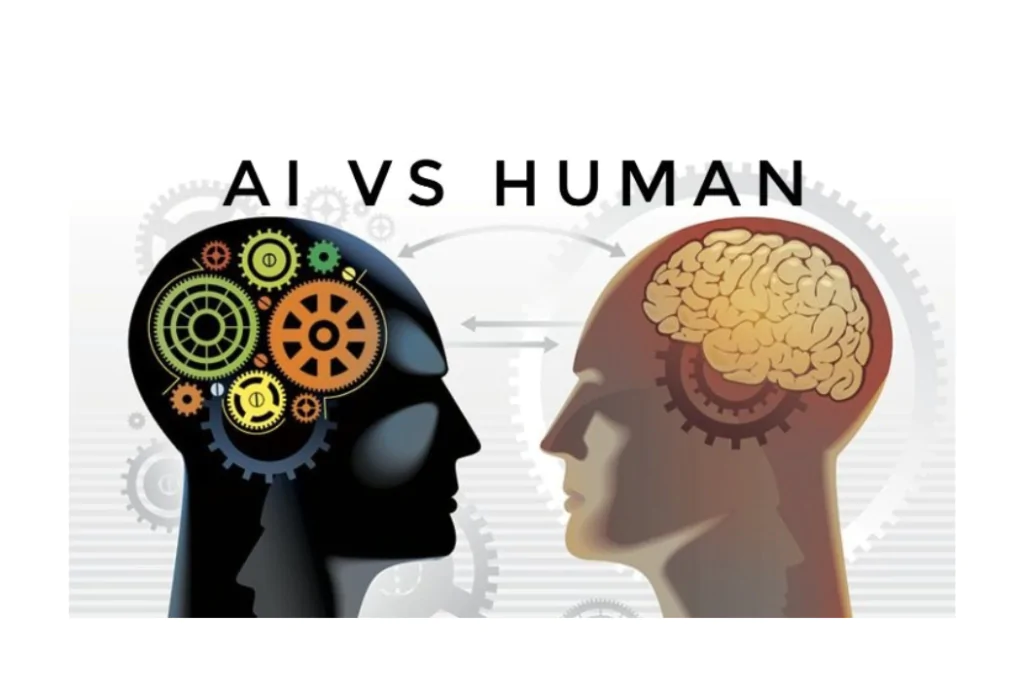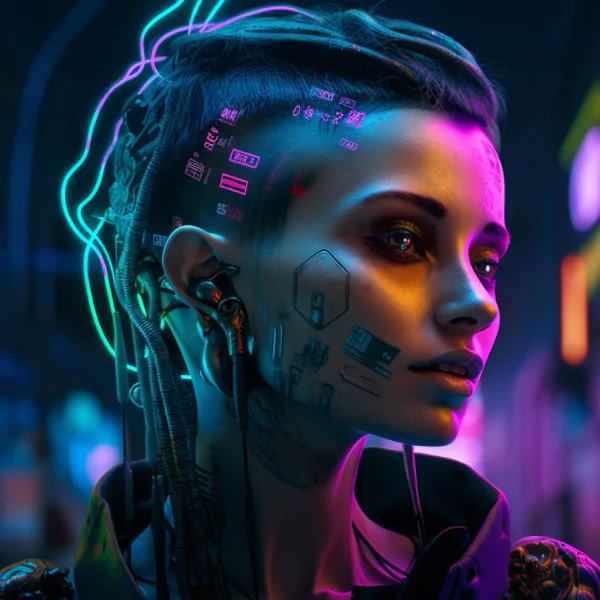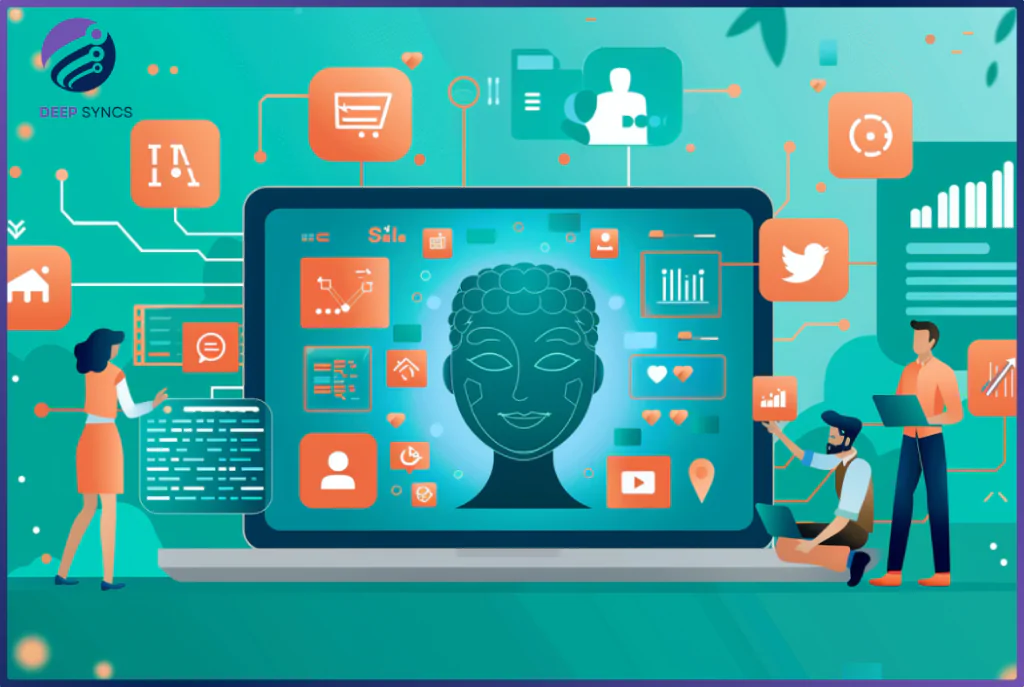Introduction
Artificial Intelligence and Human Intelligence are two distinct yet interconnected fields that have been shaping our world in profound ways. Understanding the relationship between these two forms of intelligence is crucial as we navigate the complexities of an increasingly AI-driven society.
Definition of Artificial Intelligence
AI refers to the simulation of human intelligence processes by machines, including learning, reasoning, and self-correction.
Artificial intelligence covers any computer capability that is comparable to the human brain, such as critical thinking, decision-making, and enhanced productivity. Human insights that can be interpreted in a way that makes tasks, no matter how complex or simple, easy for machines to complete are the basis of artificial intelligence (AI).
Artificial intelligence encompasses tasks such as computer vision, scheduling, robotics, control mechanisms, and data mining.
Definition of Human Intelligence
Human Intelligence encompasses the cognitive abilities of individuals, such as problem-solving, creativity, emotional understanding, and social interaction.
Human intelligence and behavior have their roots in the individual’s particular mix of heredity, upbringing, and experiences in a range of settings and circumstances. And it all depends on an individual’s ability to use newly learned knowledge to adapt to their surroundings.
Importance of Understanding the Relationship between AI and HI
Exploring the intersection of AI and HI allows us to leverage the strengths of both, leading to advancements in technology, creativity, and problem-solving. Understanding the relationship between artificial intelligence (AI) and human intelligence (HI) is crucial for several reasons:
-
Collaboration and Complementarity: AI and human intelligence can complement each other to enhance capabilities across various domains. AI can handle repetitive, data-intensive tasks, while humans can provide creativity, empathy, and nuanced decision-making.
-
Ethical Implications: As AI becomes more integrated into our daily lives, it is important to understand its impact on society, including ethical considerations related to privacy, bias, and accountability. Understanding the relationship between AI and HI helps in shaping ethical AI development.
-
Enhancing Productivity: Combining AI and HI can lead to improved productivity and efficiency. Humans can focus on higher-level, strategic tasks while AI can automate and streamline processes.
-
Human-Centered Design: Understanding how AI interacts with human intelligence allows for the creation of AI systems that are user-friendly, intuitive, and aligned with human needs and values.
-
Skill Augmentation: AI can be used to augment human skills, enabling individuals to perform tasks they may not be able to do otherwise. This includes providing decision support, data analysis, and other capabilities.
-
Impact on Employment: Understanding the relationship between AI and HI can help address potential challenges related to workforce displacement and job transformation. By recognizing how AI can be used to enhance existing roles, we can plan for the future of work.
-
Innovation and Creativity: AI can help spark innovation by providing new tools and perspectives, while human intelligence brings creative insights that AI may not yet achieve.
-
Safety and Trust: Understanding the relationship between AI and HI can lead to the development of AI systems that are safer and more trustworthy. This is crucial for building public trust in AI technologies.
The Evolution of AI and HI
Historical Development of Artificial Intelligence
From the early days of symbolic AI to the current era of deep learning and neural networks, AI has made significant strides in mimicking human cognitive functions.
Artificial intelligence (AI) has evolved significantly since its inception. The term was coined at the Dartmouth Conference in 1956, marking the official start of AI research. Early explorations in symbolic reasoning and problem-solving in the 1950s and 1960s were followed by AI winters in the 1970s and 1980s due to limited results. The 1980s saw a revival with expert systems, and the 1990s and 2000s brought a shift toward data-driven AI and machine learning. The 2010s revolutionized AI with deep learning techniques, enabling AI to achieve human-competitive performance in tasks such as image recognition and natural language processing. Today, AI is integral across industries, with a focus on ethical and human-centric design.
Cognitive Abilities of Humans
Humans possess unique cognitive abilities, including emotional intelligence, social awareness, and creativity, that set us apart from AI systems.
Co-evolution of AI and HI throughout History
The relationship between Artificial Intelligence and Human Intelligence has been marked by a constant exchange of ideas, with each influencing and shaping the other in a symbiotic manner.
The co-evolution of artificial intelligence and human intelligence throughout history has been a dynamic process in which each has influenced the development and progress of the other. Early AI research drew inspiration from human cognitive processes, such as reasoning and problem-solving, and aimed to replicate these capabilities in machines. This led to the creation of AI systems that could simulate aspects of human intelligence, including expert systems and symbolic reasoning.
As AI technology advanced, it began to provide new tools and insights that augmented human intelligence. For example, machine learning and data analysis techniques enabled humans to process vast amounts of information quickly and make data-driven decisions. This collaboration has led to innovations across various fields, such as healthcare, finance, and transportation, where AI supports human decision-making and problem-solving.
At the same time, human intelligence has played a crucial role in shaping the ethical and responsible development of AI. Human oversight, values, and ethical considerations guide the creation of AI systems that are safe, trustworthy, and aligned with human needs. As AI continues to evolve, the ongoing interaction between AI and HI will likely lead to further advancements and mutual benefits, enhancing human capabilities while promoting responsible AI use.
Difference between AI and HI
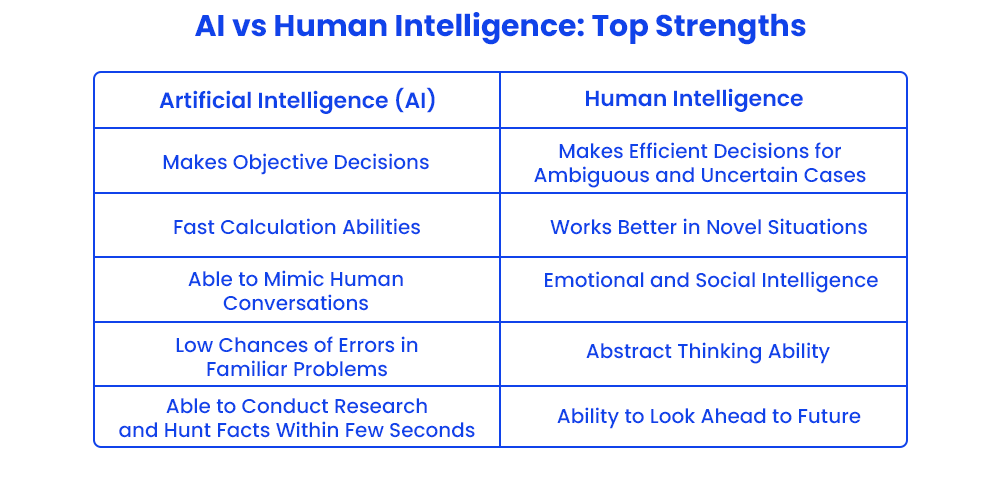
Impact of AI on Human Intelligence
Enhancing Cognitive Abilities through AI
AI has the potential to enhance human cognitive abilities by augmenting our problem-solving skills, memory, and decision-making processes.
Ethical Considerations of AI Augmenting Human Intelligence
Concerns around privacy, biases in AI algorithms, and the ethical implications of augmenting human intelligence with AI technologies need to be carefully addressed.
Potential Threats to Human Intelligence posed by AI
The over-reliance on AI systems for decision-making and problem-solving may lead to a decline in critical thinking skills and creativity among individuals.
Artificial intelligence (AI) poses potential threats to human intelligence through its ability to automate complex tasks, which may lead to dependency on AI systems and a decline in critical thinking and problem-solving skills. Additionally, the widespread use of AI could exacerbate social inequalities by favoring those with access to AI technology and its benefits. AI systems that make decisions based on biased data can perpetuate stereotypes and discrimination. The influence of AI in education and decision-making processes may also undermine human autonomy and creativity if not carefully managed. Ethical considerations and regulation are essential to ensure AI enhances, rather than diminishes, human intelligence.
Will AI Replace Human?
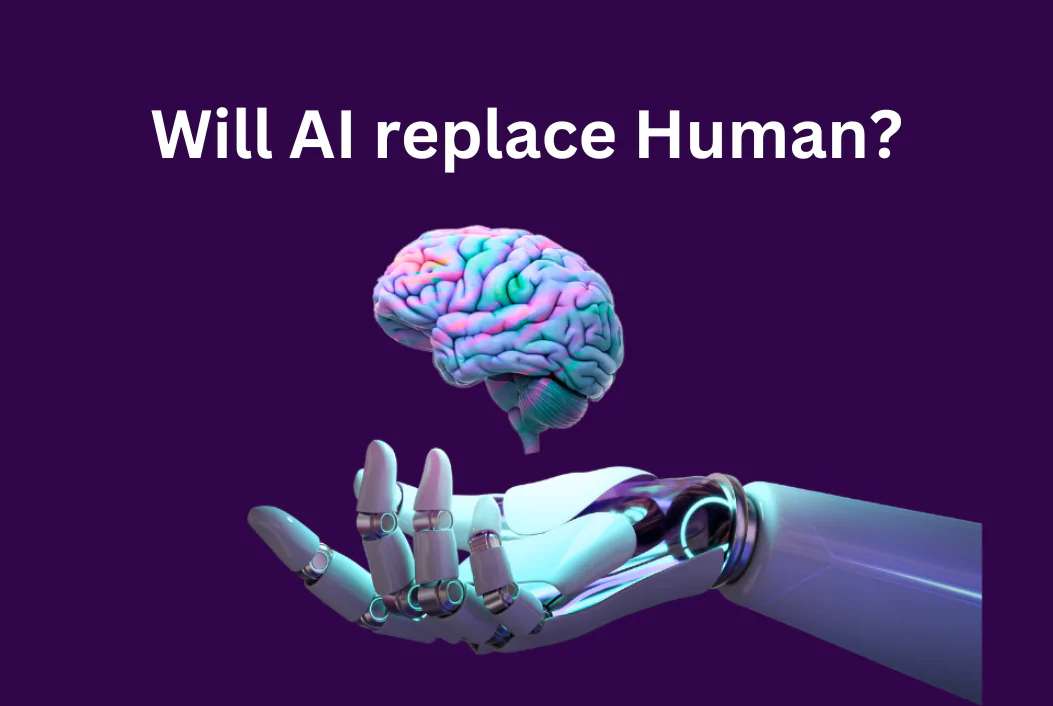
AI is unlikely to completely replace humans; rather, it is more likely to complement and augment human abilities. AI can automate routine and data-intensive tasks, allowing humans to focus on higher-level strategic thinking, creativity, and interpersonal skills. While AI may transform certain job roles and tasks, humans bring unique qualities such as emotional intelligence, empathy, and moral judgment that AI cannot fully replicate.
As AI continues to advance, it will likely be integrated into various industries and professions, leading to changes in the nature of work. However, this integration can also create opportunities for humans to engage in new and innovative ways, focusing on areas where human qualities are essential. Ultimately, the relationship between AI and humans will be one of collaboration, with AI acting as a tool to enhance human potential rather than replace it.
Synergies between AI and HI
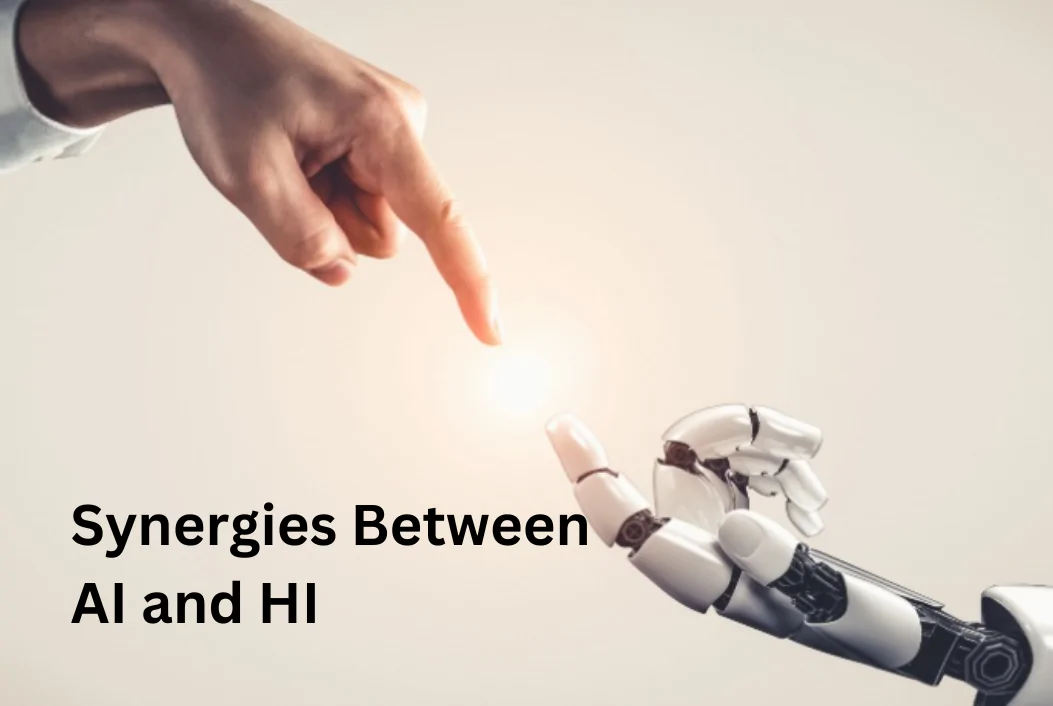
Collaborative Intelligence: Humans and AI working together
The concept of collaborative intelligence involves humans and AI systems working in tandem to leverage the strengths of both for better outcomes.
Enhancing Human Creativity and Innovation through AI
AI can serve as a catalyst for human creativity and innovation, enabling us to explore new possibilities and push the boundaries of what is possible.
Opportunities for Leveraging AI to Improve Human Life
By harnessing the power of AI technologies, we can address societal challenges, improve healthcare outcomes, and enhance overall quality of life for individuals.
Future Outlook of Artificial Intelligence and Human Intelligence
Advancements in AI Technology and its Implications for HI
As AI continues to evolve rapidly, it is essential to consider the implications of these advancements on human intelligence and our societal structures.
Challenges of Maintaining Human Autonomy in the Age of AI
Balancing the benefits of AI with the preservation of human autonomy is a key challenge that will define our future interactions with intelligent technologies.
Possibilities of Achieving a Balance between AI and HI in Society
Striking a balance between the capabilities of AI and the unique strengths of human intelligence will be critical in shaping a future where both can coexist harmoniously.
Summary
This article delves into the complex relationship between Artificial Intelligence and Human Intelligence, exploring their evolution, impact on each other, synergies, and future outlook. Understanding this intersection is crucial in navigating the opportunities and challenges that arise in a world increasingly shaped by AI.
How can we ensure the responsible development and integration of AI in society?
It is essential for policymakers, technologists, and ethicists to collaborate in setting guidelines for the ethical and responsible use of AI, ensuring that it complements and enhances human intelligence rather than replacing or overshadowing it.
Learn more about AI tools and Latest Blogs.
